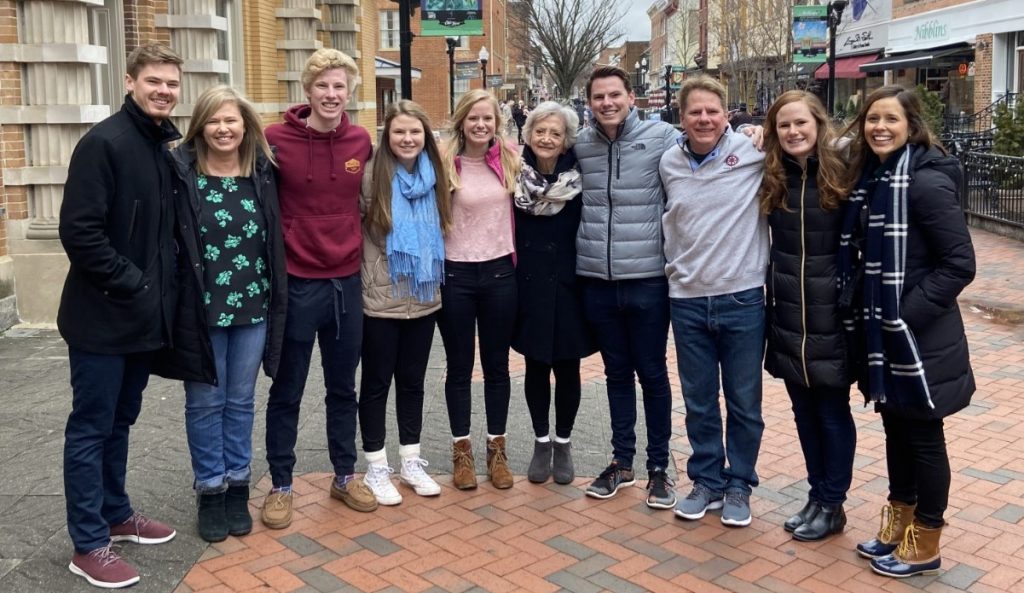By Elizabeth Pease
Early in the Covid-19 outbreak, Mary Timler (Evansville) anticipated a need. She says, “We thought, ‘What if someone in our household got sick?’ We would go through those disposable masks really quickly. Making masks that could be washed and re-worn was really attractive.”
As a nurse, Mary had worn surgical masks for work, and she knew what she liked and didn’t like. She did some digging on the internet, and found a pattern that fits tightly to ensure you’re breathing through the fabric, and has adjustable ties that will fit different sizes of faces.
Last week, we profiled a number of sisters in the community who are sewing masks to share with others, including Mary and her household member Ellen Reed. You can read that story here.
If you are interested in learning to make masks yourself and are looking for some good tips, here are the results of Mary’s research on the masks that are working for the missionaries (see also the video above). There are many other patterns and tutorials available on the internet.
Mary’s Tips:
● The mask design we’re using is based on this tutorial from the University of Arizona. A quilter and a nurse got together to design the mask. This pattern uses only one strap in a clever way. I think the fit is even better with just one strap than two! https://www.nursing.arizona.edu/news/uarizona-nursing-volunteers-fine-tune-homemade-face-masks-address-shortage-issues
● I made a couple of masks with two layers of quilter’s cotton, but when I held them up to the light, I could see through them. To get a tight enough weave for good protection, we’re using two layers of 100% cotton on the outside with a layer of flannel in between. Many mask makers recommend using three layers of fabric. They could be three layers of cotton or two layers of cotton with a lining of flannel or non-woven interfacing in between. Having the flannel on the inside prevents pilling.
● We’ve left the nose clip part out of the University of Arizona design, and added the extra layer of flannel.
● Our design avoids using elastic, which is hard to get, and may break down in the wash over time, and the single tie makes it adjustable to fit different people. It makes a good seal so you’re breathing through the fabric, is easy to sew, and launders well. The one con is that some people may not like the feel of so much fabric on their faces, and the three layers can make it uncomfortable to breathe through for those with underlying health conditions. If you have asthma or another breathing condition, better to go with just two or three layers of cotton.
● Whenever possible, use new, unused fabric. 100% cotton, tightly woven. Wash and dry before sewing.
● Other patterns often don’t include seam allowance. Most intend for 1/4" seam allowance.
● If you’re making a lot of masks, work in stages. For example, cut out the fabric for all the masks, and then move on to the next step and do that for all the masks.
● Generally, 10 masks can be made from one yard of fabric, depending on the pattern. Two 7 inch pieces of 1/4 inch elastic are needed for each mask. Or you can use fabric to make your own ties.
● Using contrasting fabric for the front and back of the mask helps distinguish the inside from the outside. This is especially helpful if you remove the mask and plan to put it back on. You want to make sure the side against your face is not what was on the outside of the mask. Make sure to launder your masks in between uses. We’ve been wearing them every day and they hold up well!
The CDC recommends the use of cloth face coverings in public primarily to prevent the wearer from spreading covid-19 to others, particularly because someone can be infected with the virus but not know it. If you’d like more information on face coverings from the CDC, including how to make them, wear them and generally use them, you can find guidelines, tips and frequently asked questions on their website: https://www.cdc.gov/coronavirus/2019-ncov/prevent-getting-sick/diy-cloth-face-coverings.html


Responses
Kathleen Heinrich says:
May 15th, 2020 at 5:33 PM
This is a great idea. Thank you and God bless.
Leave a Response